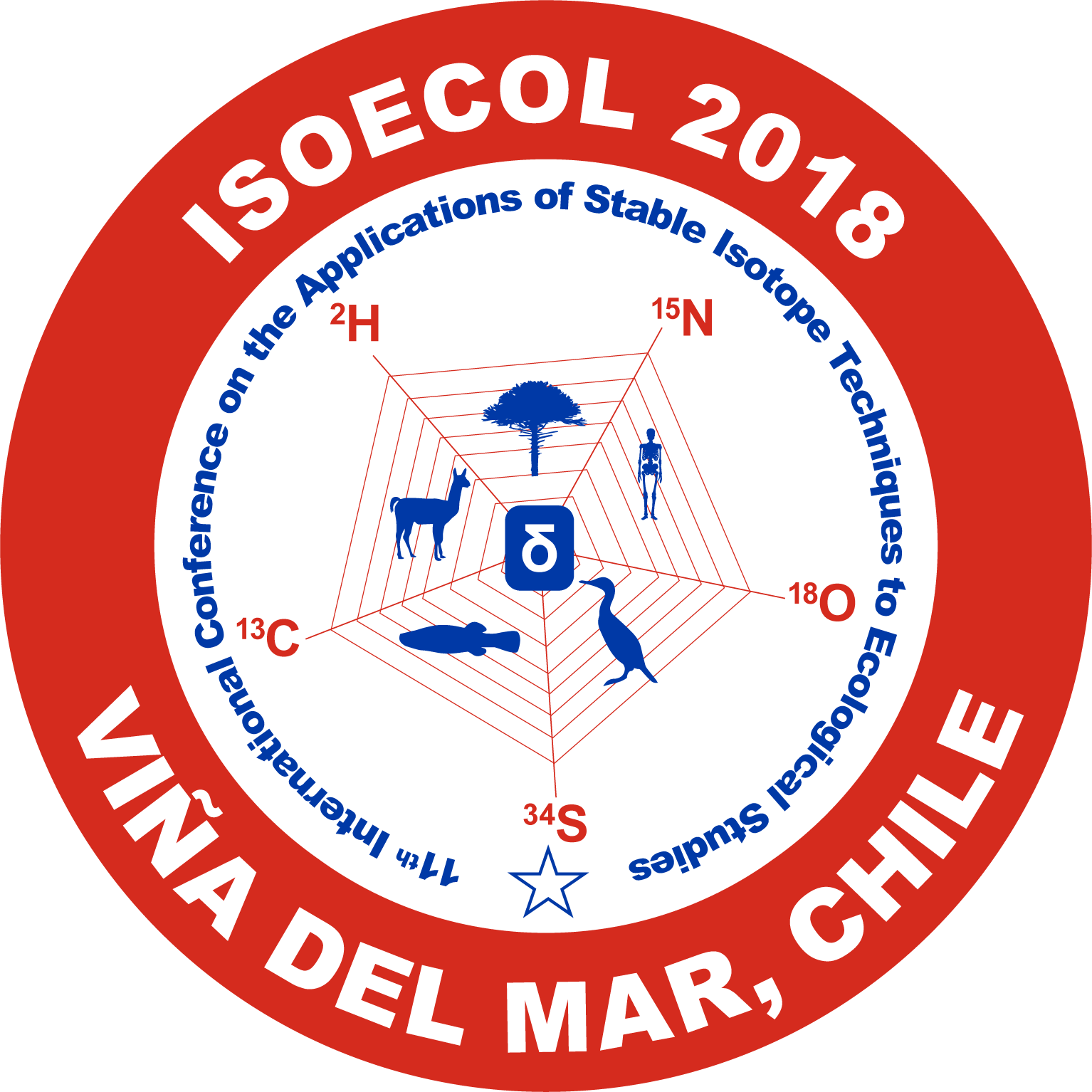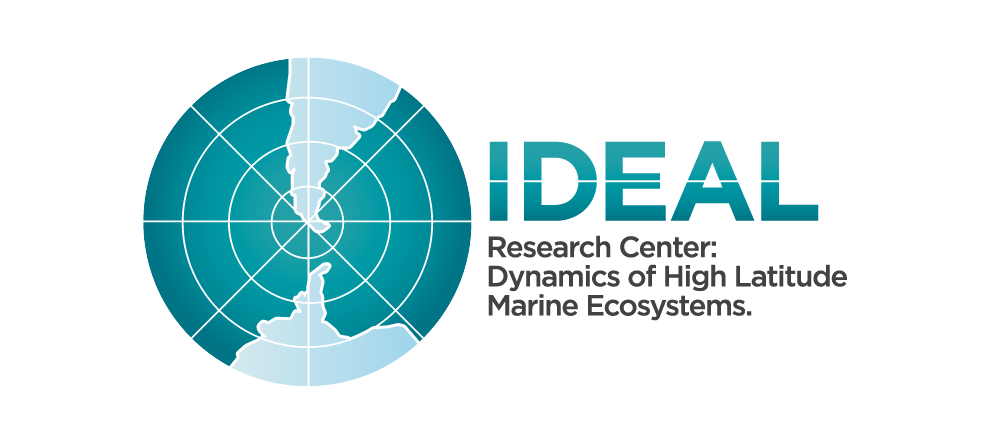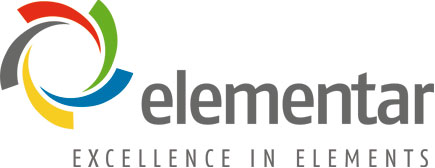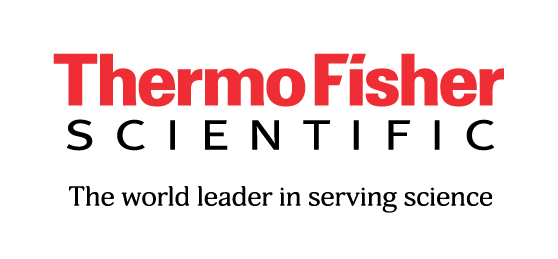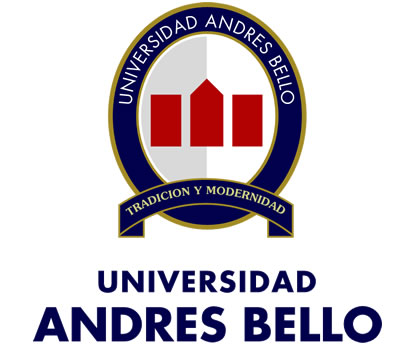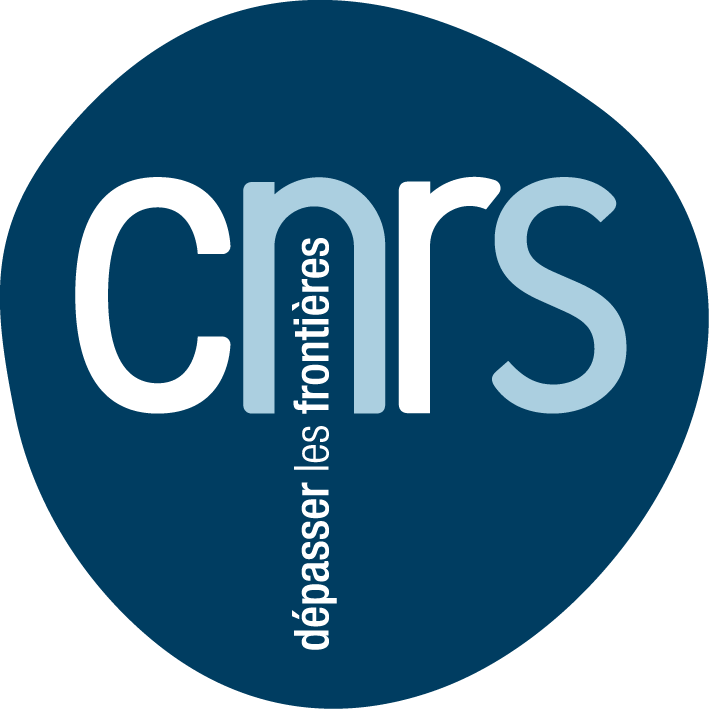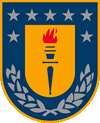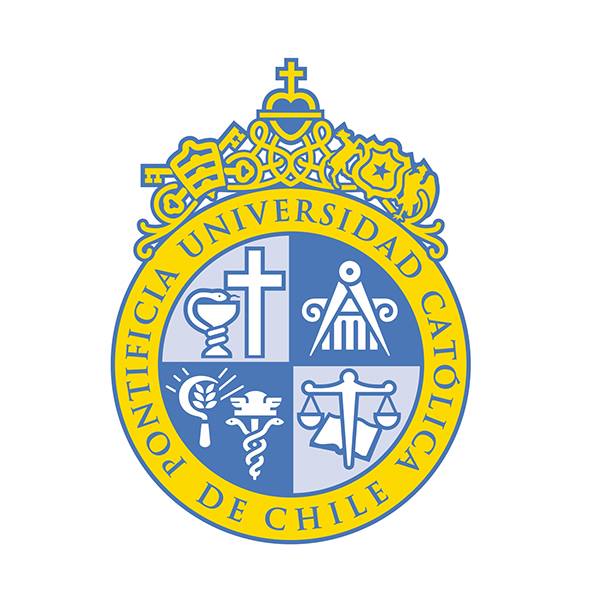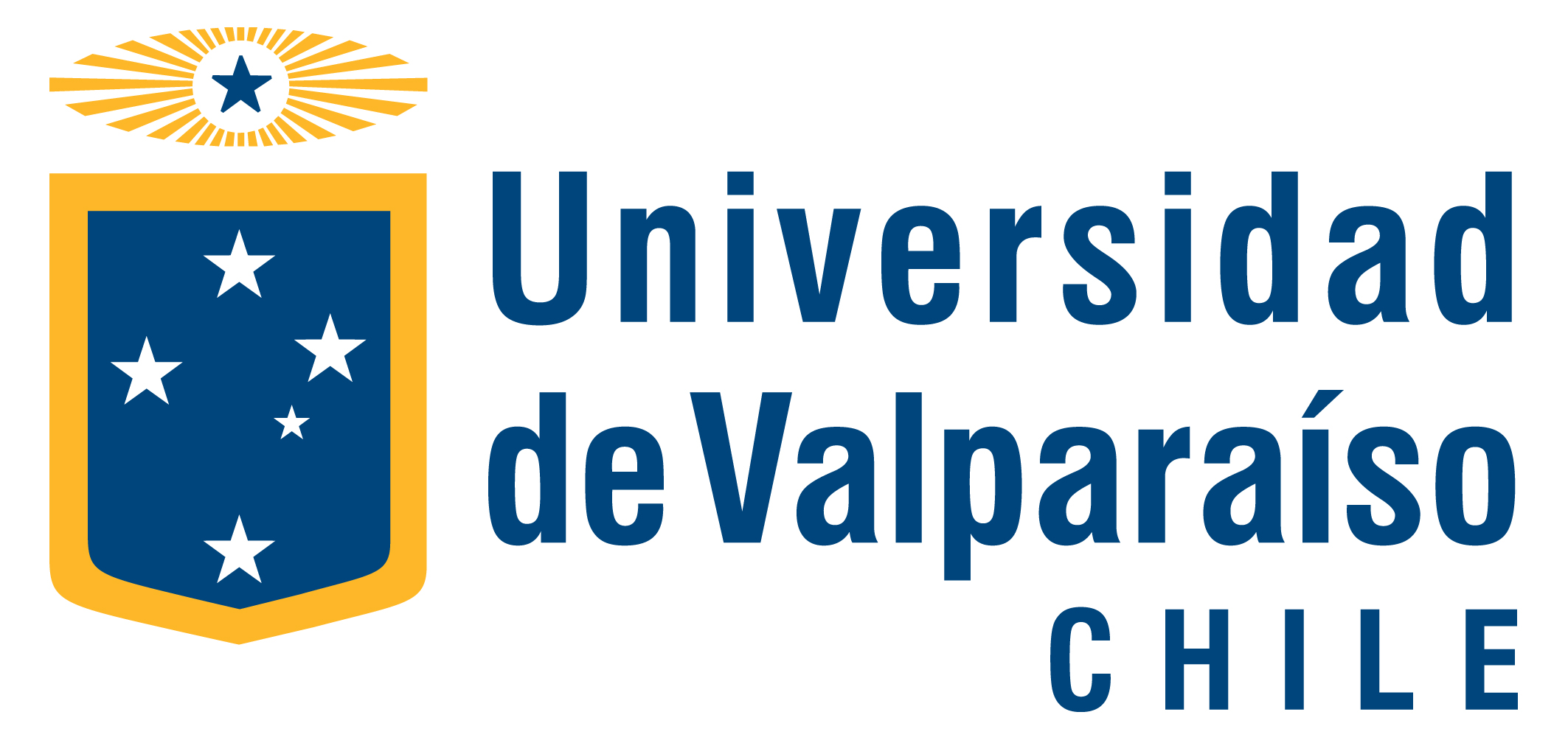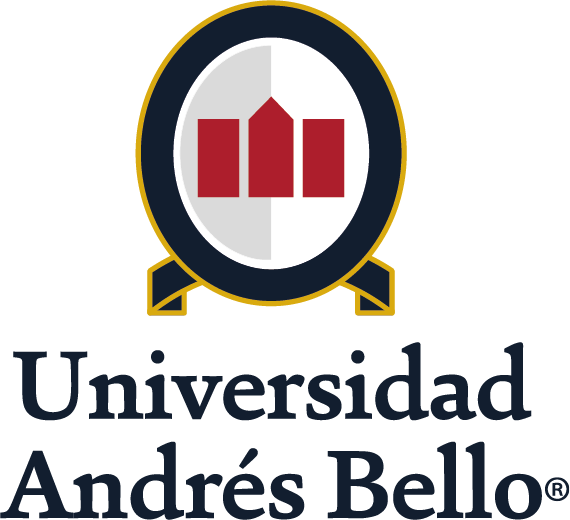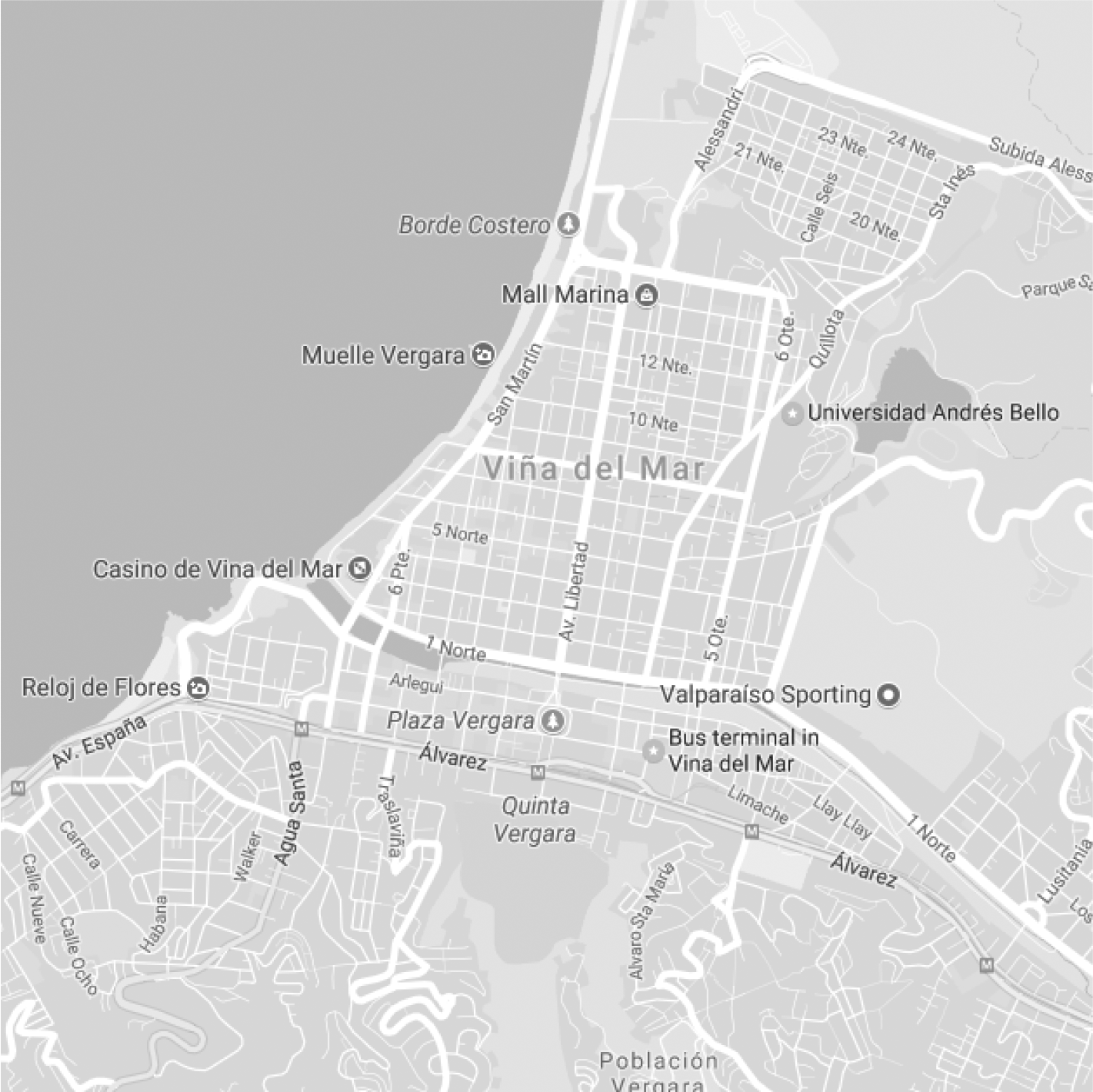Home Schedule Registration Workshops Previous meetings Field Trips Plenaries Location
ISOECOL 2018 - WORKSHOPS
WORKSHOPS AT ISOECOL:
During recent IsoEcol meetings, there has been a gradual increase in the number of workshops held in the weekends prior and following the conference. These workshops have been used to provide training in new methods and ideas, and to allow researchers active in a certain new area to compare notes and discuss future directions. They are extremely valuable as they take advantage of the rare opportunity to get large numbers of isotope ecologists in one location and also the presence of scientists at different career stages, allowing interactions between those leading in a particular field and those who wish to learn more about a particular subject.
At IsoEcol 2018 we will hold workshops over the weekends before (28-29 July), during and after (4 August) the conference. All workshops are held in the main UNAB campus located at Quillota 980, Viña del Mar, Región de Valparaíso, Chile. Directions to rooms will be signposted as you enter the campus (see room numbers below).
**Please do not attend a workshop if you haven't booked it with Chris Harrod**
Workshop 1: Introduction to Bayesian statistics for stable isotope ecologists
Contributors: Andrew Jackson & Claudio Quezada-Romegialli
Date: Saturday 28 July 2018 10:00 - 16:00 Room 205, Floor 2, Tower A (Tower A is on the side of the building where you enter the campus. Climb one floor and look for Room 205).
Max. number = 60 FULLY SUBSCRIBED
Abstract: This workshop will assume no prior knowledge (no pun intended) of Bayesian statistics. We will work through the basic theory of this approach using both conceptual and simple mathematical models. We will then extend our skills developing simple computational models to fit univariate normal models to data using both analytical solutions and simulation approaches using the JAGS software run through R. We will then move on to fitting more complex models such as simple linear models and bivariate data as an introduction to working with ellipses such as those fitted using SIBER. We will conclude by using mixing models MixSIAR and SIMMR and the ellipse and convex hull models in SIBER to test specific hypotheses and learn how to report our results. Attendees should have some familiarity with R and be comfortable fitting and interpreting general linear models using frequentist or likelihood approaches. Attendees do not necessarily have to have used Bayesian methods previously, but those with prior experience may still wish to attend to explore these methods in more depth. A full list of software and packages required will be provided closer to the date.
Workshop 2: ORIGIN: Origin Inference from Geospatial Isotope Networks – software and tools associated with a cyberinfrastructure for building and using isoscapes to estimate geographic origins of tissues
Contributors: Mike Wunder, Gabe Bowen & Hannah Vander Zanden
Date: Sunday 29 July 2018 10:00 - 17:30 Room 726, Floor 7, Tower C (Tower C is the side of the building on your right when you enter the campus. Take a lift to the 7th floor and look for Room 726).
Max. number = 45 FULLY SUBSCRIBED
Abstract: This workshop will introduce participants to new developments in the isotope-based toolbox for estimating spatially-explicit probabilities of origin for organic materials. By way of introduction, we will begin with an overview of research and management problems and accompanying conceptual frameworks for this type of isotope data analysis. This will be followed by an outline of the existing and planned infrastructure that provides access to environmental isotope data and models supporting the construction of isoscapes. Next, we introduce a newly introduced and rapidly developing R package that interacts with the isoscape infrastructure to build models for estimating geographic origins of sample data. Finally, we will offer a small range of example problems for attendees to work through in order to gain hands-on experience with the methods. Participants should plan to bring their own laptops and be prepared to download data and software during the workshop. Where relevant, participants are also invited to bring their own data for use and/or consultation toward the end of the workshop. We would also like to reserve some time for a round-table forum to discuss approaches that attendees have taken in their own work, and to solicit input on potential additional features that would better address the needs of the broader research community.
Workshop 3: Stable isotopes in invasive species ecology (sponsored by INVASAL.cl)
Organisers: Jonathan Grey & Chris Harrod
Date: Tuesday 31 July 2018 18:45 - 20:30 Room 725, Floor 7, Tower C (Tower C is the side of the building on your right when you enter the campus. Take a lift to the 7th floor and look for Room 725)
Max. number = 30 FULLY SUBSCRIBED
Abstract: Stable isotope analysis has become a standard tool in the invasion ecologist toolkit. We (Prof Jon Grey & Prof. Chris Harrod) are isotope ecologists using the technique to understand species (and their impacts) in both the northern and southern hemispheres. During IsoEcol 2018, we will lead a workshop aiming to gather the community together and to review the state of the art of isotope invasion ecology. Through discussion, we aim to identify what isotope invasion ecologists are doing right, what they are doing wrong, what possibilities are being missed, and what is waiting for us over the horizon in terms of challenges and opportunities. We invite interested delegates ranging from seasoned invasion ecologists or those just starting out with their studies to join us.
Workshop 4: What can iso-ecologists and iso-archaeologists learn from each other?
Contributors: Tamsin O’Connell, Francisca Santana Sagredo & Seth D. Newsome
Date: Thursday 2 August 2018 18:45 - 20:30 Room 725, Floor 7, Tower C (Tower C is the side of the building on your right when you enter the campus. Take a lift to the 7th floor and look for Room 725)
Max. number = 30 FULLY SUBSCRIBED
Abstract: Ecologists and archaeologists have both embraced isotopic analyses for over 40 years. Each group is asking similar questions about the individuals and populations they are studying – who is from where and what did they eat? But what does the addition of time depth mean for isotopic studies? From the nature of the available material to the scope of sampling possibilities, time has a big effect. This workshop aims at bringing together those dealing in isotopic analyses in the present and the past to discuss strengths and weaknesses, challenges, and potential opportunities. Specific topics will include: (1) the types and number of samples needed to rigorously address questions, (2) the use of controlled experiments to interpret patterns in ancient data, (3) techniques and statistical programs used to analyse data, and (4) how archaeological data can be used to better inform modern conservation and management of threatened/endangered species or key ecosystems (e.g. by providing baseline values prior to anthropogenic change). We hope that two communities (archaeology and ecology), which do not engage as much as they probably should, can learn from each other. The workshop will be held in the latter half of the conference, so we can draw out issues that have been raised during presentations and discussions during IsoEcol.
Workshop 5: Approaches to improve the reproducibility of amino acid stable isotope analyses
Contributors: Diane O’Brien, Pam Shaw, Chris Yarnes, Seth Newsome, Tamsin O’Connell
Date: Saturday 4 August 2018 13:00 - 18:00 Room 725, Floor 7, Tower C (Tower C is the side of the building on your right when you enter the campus. Take a lift to the 7th floor and look for Room 725)
Max. number = 30 FULLY SUBSCRIBED
Abstract: This workshop will introduce participants to some approaches for monitoring, minimizing, and correcting error in analyses of amino acid stable isotope ratios by GC-C-IRMS. We will begin with an overview of how and why such corrections are done, particularly for the measurement of amino acid carbon isotope ratios, and some limitations of existing approaches. Dr. Pamela Shaw, a biostatistician at UPenn a will present a statistical approach to modelling measurement error in amino acid analysis, using internal (co-injected) and external (mixed amino acid) standards .She will demonstrate how such models can be used to correct for error using R (please bring a laptop with R installed for this component of the workshop).Dr. Chris Yarnes from UC Davis will discuss referencing strategies, quality assurance, and other topics relating to improving the reproducibility of amino acid stable isotope measurements over time within and across labs. Dr. Seth Newsome from the U of New Mexico will lead a discussion of the pros and cons of different derivatization methods (GC-C-IRMS), measurement approaches (GC vs. HPLC), and instrumentation. We hope to stimulate discussion and brainstorming of best practices for future research via an open mic question/answer session.
Workshop 6: Simulation modelling in isotope ecology
Contributor: Clive Trueman
Date: Saturday 4 August 2018 13:00 - 18:00 Room 726, Floor 7, Tower C (Tower C is the side of the building on your right when you enter the campus. Take a lift to the 7th floor and look for Room 726)
Max. number = 50
Abstract: Variations in stable isotope compositions of C, N, S, O, Sr and H have provided a powerful toolbox to explore aspects of trophic, physiological and spatial ecology The isotopic compositions of animal tissues are, however, influenced by a wide suite of variables including spatial and temporal variation in the isotopic composition of external sources, physiological influences on tissue-diet fractionation, movement patterns and diet variability. It is extremely challenging to understand the influence of these multiple, coincident sources of variance on isotopic compositions, particularly as we commonly do not know the extent of isotopic variability associated with many potential influencing variables. But if we want to draw meaningful and robust inferences from isotopic data, we should attempt to explore how sensitive our isotopic metrics may be to different sources of variance. Simulation modelling provides a framework for investigating the possible isotopic expression of complex interactions of incompletely understood processes. Building simple toy models to simulate isotopic compositions in animal tissues has two benefits: firstly constructing models forces us to identify and attempt to quantify sources of isotopic variance and our level of knowledge inherent in a system under study (often a sobering process), and secondly, having constructed a model, we can use it to better understand our real-world data.
In this workshop we will initially discuss some of the opportunities and challenges associated with building simple simulation models, but the main aim of the workshop will be to use existing models developed by workshop leaders to run simulations for a system or topic that we all workshop attendees will identify and agree on prior to IsoEcol. We will provide basic models simulating temporal and spatial variation in isotopic sources across geographic areas, physiological models exploring isotopic fractionation through the body and individual (agent)-based models simulating animal interactions with the environment. Coupling these models gives us a framework for exploring isotopic variability and pattern in individuals and populations.
IMPORTANT – we are isotope ecologists, not modellers. We develop models that are good enough to provide an in silico experimental framework – but we’re not trying to provide accurate behavioural or physiological representations. This allows us to use quite simple model approaches, as long as we don’t forget that models are not real… We work in R, and to get the most out of this workshop, you will probably need a basic working familiarity with R coding - but nothing more.
sponsors
We are extremely lucky to have received sponsorship from a range of different sources. Their generous contributions mean that we have been able to minimise registration costs (especially for students), provide student fellowships and invite plenary speakers.
